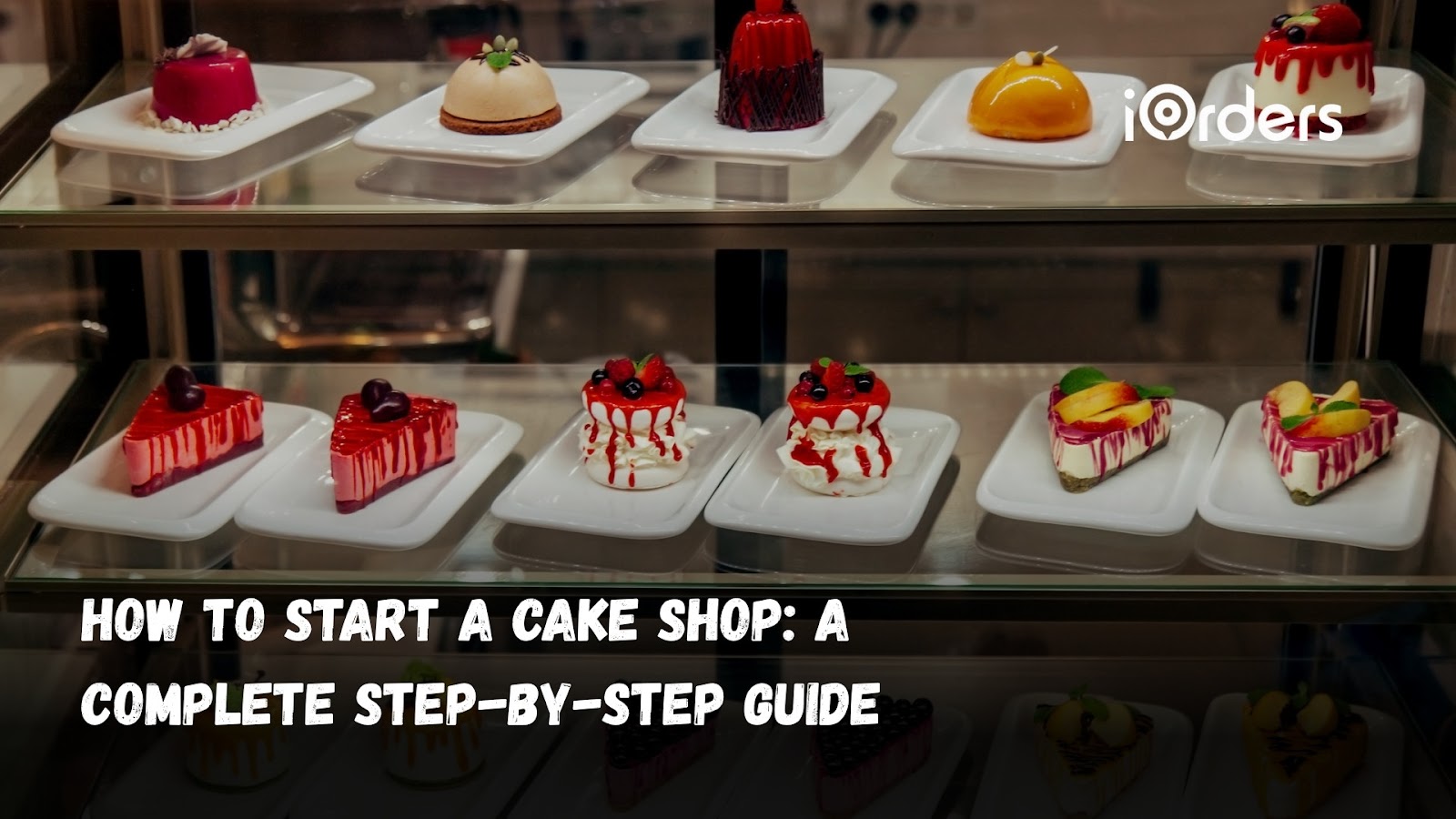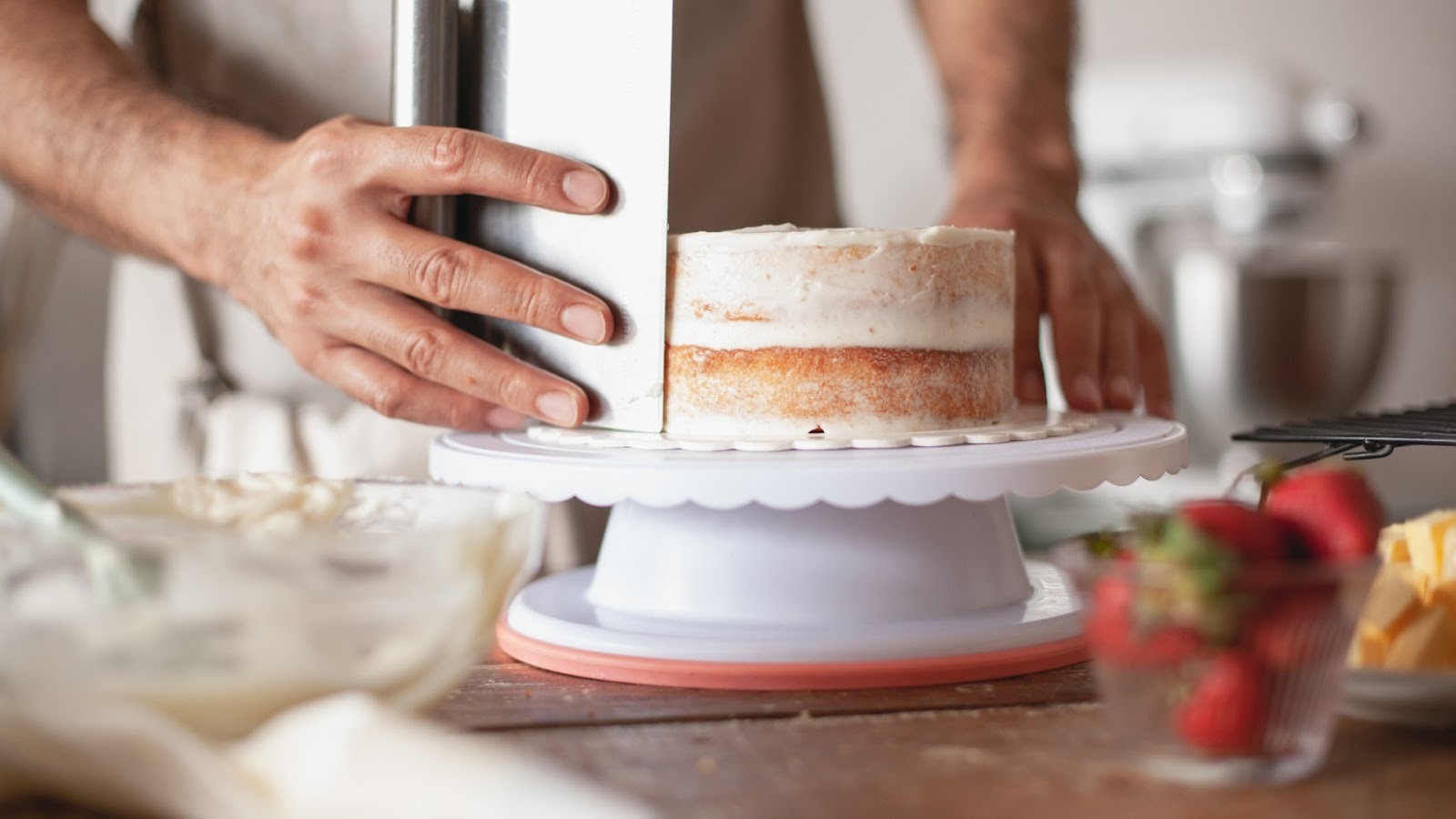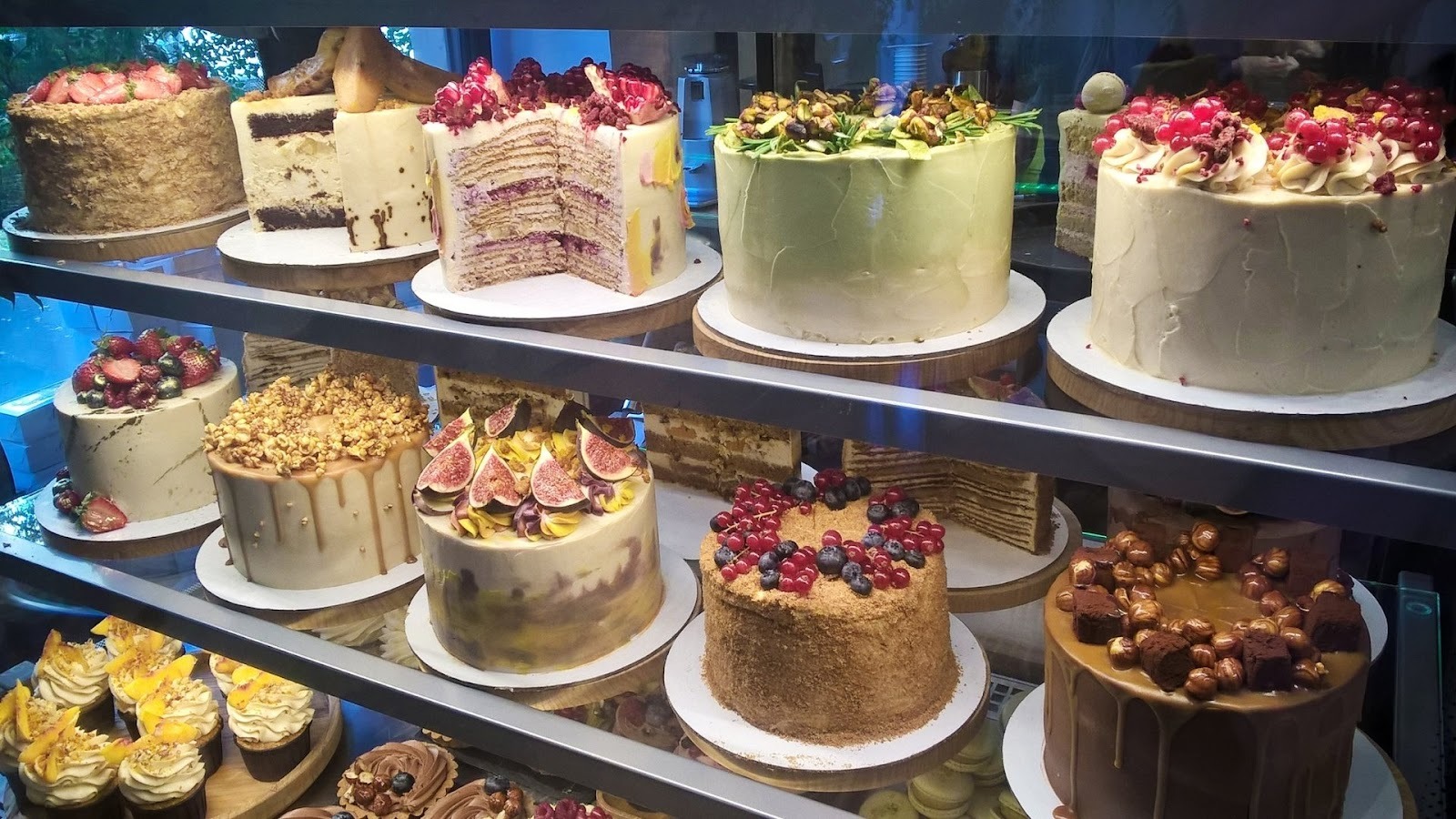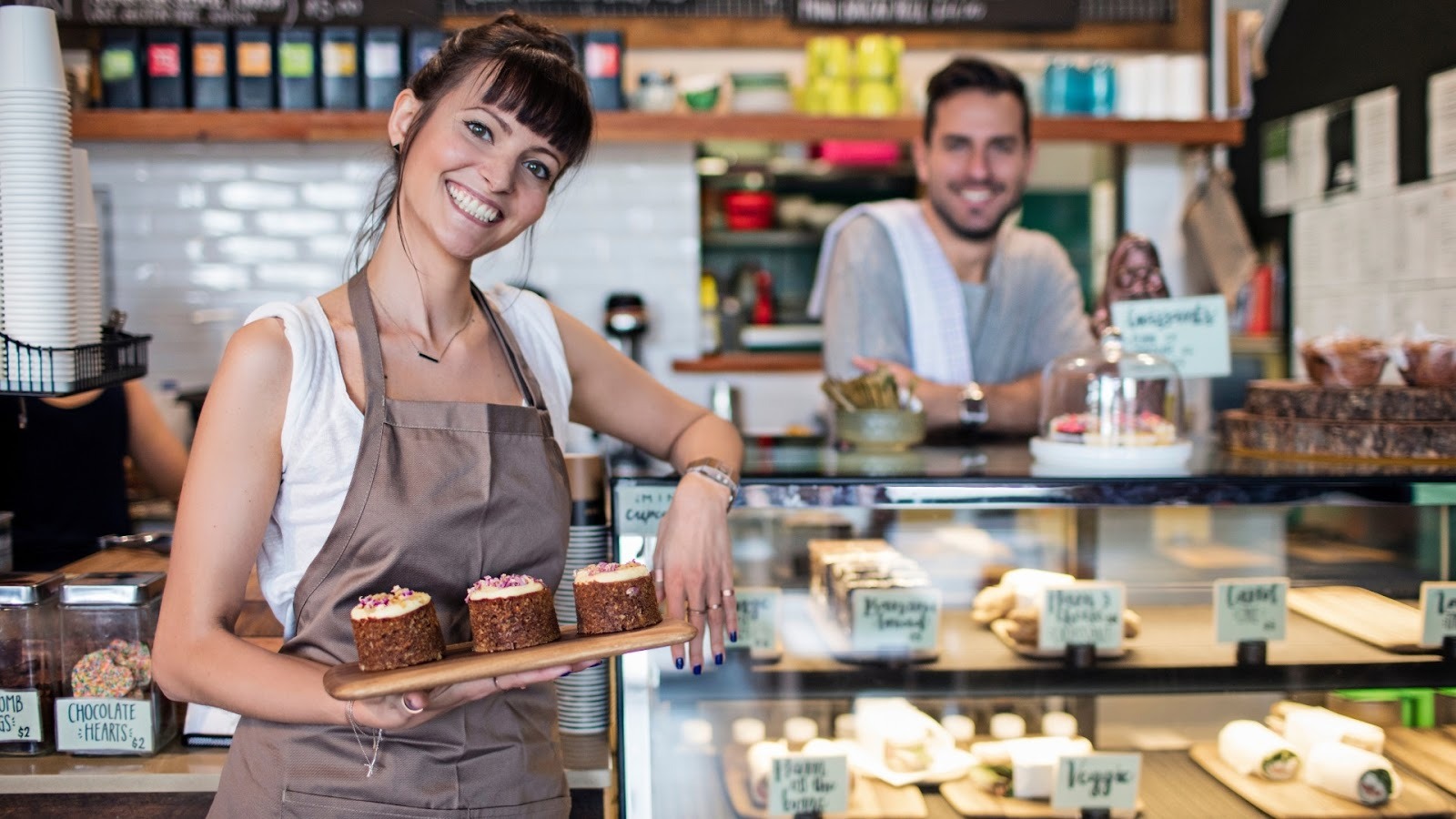October 22, 2025

The cake business is growing fast. According to recent data, the global cake market reached USD 65.68 billion in 2023 and is expected to hit USD 80.42 billion by 2030. This growth shows that demand for custom cakes, celebration desserts, and specialty baked goods keeps rising as more people value quality and personalization.
Starting a cake shop can be exciting and profitable, especially with this market momentum on your side. You need more than just great baking skills, though. You need to handle permits, pricing, equipment, and customer orders.
In this guide, we walk you through every step of opening a cake shop, from creating your business plan to accepting your first online orders. Let’s get into it.
A cake shop is a food business that specializes in creating and selling custom cakes, cupcakes, and baked desserts for celebrations, events, and everyday occasions. You can operate from a home kitchen, commercial space, or storefront, depending on local regulations and your business model.

Alt text:What Is a Cake Shop Business?
Most cake shops focus on a specific niche to stand out from the competition. For example, some specialize in wedding cakes with intricate designs, while others focus on themed birthday cakes for children.
Some bakers build their reputation around specific flavors like red velvet or tres leches, while others offer allergy-friendly options like gluten-free or vegan cakes.
Now that you know what a cake shop is and the different ways to run one, let’s take a detailed look at why so many bakers are making this move.
Starting a cake shop offers several advantages that make it an attractive business opportunity for skilled bakers.
These benefits make cake shops attractive, and getting started is more straightforward than most people think. Here's your complete roadmap.
Starting a cake shop requires careful planning and execution across multiple areas. Here's how to do it right.

Alt text:How to Start a Cake Shop: 8 Simple Steps
1. Research Your Market and Define Your Niche
Before you invest money, you need to know who you're selling to and what makes you different.
Start by researching local competition:
Visit other bakeries and cake shops in your area. Check their menus, prices, online presence, and customer reviews. Look for gaps in what they offer.
For example, if most shops focus on traditional designs, you could specialize in modern minimalist cakes. If no one offers vegan options, that's your opportunity.
Define your target customer:
Your target market affects everything from your pricing to your packaging to where you advertise. Ask yourself:
Choose your niche:
Pick something you're good at and that people actually want to buy. Here are common niches:
Tip: Test your concept before going all-in. Bake for friends, offer samples at local events, or sell through farmers' markets. Get honest feedback on your flavors, designs, and prices.
2. Create Your Business Plan
A solid business plan guides your decisions and helps you secure funding if needed.
Your plan should cover these key areas:
Calculate startup costs realistically:
Include equipment, initial inventory, permits and licenses, insurance, website design, development, marketing materials, and at least three months of operating expenses.
Set clear financial goals:
Note: Run the numbers before you commit. Many bakers underestimate costs and overestimate how quickly they'll attract customers.
3. Handle Legal Requirements and Permits
Operating legally protects you from fines and builds customer trust.
Research cottage food laws:
If starting from home, check your local cottage food laws. These laws vary by state and province:
Apply for necessary licenses and permits:
You'll need several documents to operate legally. Here's what most cake shops require:
Register your business entity:
Most small bakeries start as sole proprietorships or limited liability companies (LLCs). An LLC protects your personal assets if someone sues your business.
Tip: Consult with an accountant or lawyer to choose the right structure for your situation.
Get proper insurance coverage:
Insurance protects your business from unexpected claims and losses. Here are the main types of insurance cake shops need:
4. Set Up Your Kitchen and Buy Equipment
Your kitchen setup directly impacts your production capacity and product quality.
Essential equipment to start with includes:
Tip: Start with essentials and add specialized tools as you take on more complex projects. For example, you don't need an airbrush system until you're regularly creating detailed painted cakes.
Source reliable ingredient suppliers:
Build relationships with wholesale vendors who can provide consistent quality at better prices than retail stores. Restaurant supply stores or online bulk retailers often offer significant discounts on flour, sugar, butter, and other staples.
Organize your workspace:
Note: An efficient workspace reduces movement and speeds up production, letting you handle more orders without working longer hours.
5. Develop Your Pricing Structure
Pricing correctly is critical for profitability. Too low and you can't sustain the business. Too high and customers go elsewhere.
Calculate your cost of goods sold:
Add up all ingredient costs, packaging materials, and any direct labor hours for each product.
For example:
Factor in overhead costs:
Calculate your monthly fixed costs like rent, utilities, insurance, and website fees. Divide by your expected monthly order volume.
For instance, if your monthly overhead is $1,000 and you expect to sell 50 cakes, add $20 per cake for overhead.
Add your desired profit margin:
Most bakeries aim for a 50-70% gross profit margin.
Research competitor pricing:
If similar cakes in your area sell for $100 to $200, your $200 price fits the market. If everyone charges $75, you need to either lower costs, emphasize premium quality, or reconsider your business model.
Pricing tips:
Need help managing pricing, inventory, and orders as you grow? iOrders makes it easy to update your menu and prices anytime. You can test different price points and see what works without technical hassles. Book a free demo to learn more.
6. Build Your Online Presence
Most customers search online before buying, so your digital presence matters as much as your baking skills.
Create a professional website with online ordering:
Your site should include:
Tip: Using your own website instead of relying on social media or third-party apps gives you control over customer relationships and data. You keep full profit from every order instead of paying commission fees.
Set up social media accounts:
Instagram and Facebook are ideal for food businesses. Post content like:
Use local hashtags to reach nearby customers. Respond quickly to comments and messages.
Collect customer information:
When someone places an order through your website, you capture their email and phone number. This lets you send them promotions, birthday reminders, and seasonal offers to encourage repeat orders.
Want to take orders online without paying high commission fees? iOrders helps cake shops and bakeries accept orders through their own branded website. You keep more profit from every sale. Book a free demo to see how it works.
7. Market Your Cake Shop
Great products don't sell themselves. You need to actively promote your business to attract customers.
Start marketing before you officially open:
Offer different promotions to attract first-time customers:
Network in your community:
Ask satisfied customers for reviews and referrals:
After they receive their order, send a follow-up message asking them to leave a review on Google or Facebook. Offer a small discount on their next order as a thank you.
Tip: Positive reviews build credibility and attract new customers who are researching cake shops in your area.
8. Manage Orders and Operations Efficiently
As orders increase, you need systems to stay organized and deliver consistent quality.
Track orders with a calendar or order management system:
If you have three wedding cakes due the same weekend, you need to schedule prep work, baking, decorating, and delivery times carefully to avoid last-minute chaos.
Create standard recipes and processes:
Set clear policies:
Note: Having clear policies prevents misunderstandings and protects your time.
Track your finances meticulously:
Record every expense and sale. Review your numbers weekly to spot trends:
Use this data to make smarter decisions about where to focus your energy.
So, you've put in the work to create amazing cakes. You've figured out permits, equipment, and pricing.
Now you need a way to take orders and get paid without losing a big chunk of your profit to third-party apps.
Many cake shops start by taking orders through phone calls, texts, and direct messages. This works at first but becomes overwhelming as you grow. You miss orders when you're busy baking. Plus, tracking everything in notebooks or scattered messages leads to mistakes.

Alt text:Take Orders Online and Keep More Profit with iOrders
Third-party delivery apps seem like an easy solution, but they charge 15% to 30% commission on every order. On a $100 cake order, you might pay $30 in fees before you even cover your costs. These apps also own the customer relationship, so you can't build loyalty or collect contact information for future marketing.
iOrders gives you a better way to accept orders, manage customers, and grow your business without giving up control or profit.
Here's how iOrders helps cake shops succeed:
With iOrders, you own your customer data and relationships. You can update your menu and prices anytime without calling tech support. You get paid directly to your bank account instead of waiting for third-party platforms to release your funds.
Starting a cake shop requires a solid business plan, proper permits, the right equipment, smart pricing, and an effective way to attract and serve customers.
The bakers who succeed are the ones who treat their cake shop like a real business from day one. They track finances carefully, invest in quality tools, price products for profit, and build systems that let them scale without burning out.
Your online presence matters just as much as your baking. Customers want to see your work, read reviews, and place orders easily. Using your own website gives you control over the customer experience and helps you keep more profit from every sale.
Ready to accept orders online without paying high commissions? iOrders helps cake shops and bakeries grow with commission-free online ordering, branded websites, and tools to manage everything in one place. Schedule a free demo to see how it works for your business.
1. Do I need a license to sell cakes from home?
Yes, most areas require business licenses, food handler permits, and health department approval even for home-based operations. Check your local cottage food laws for specific requirements in your city or province.
2. How much should I charge for a custom cake?
Calculate your ingredient cost, labor hours at your desired hourly rate, and overhead expenses. Then add a 50-70% profit margin. A cake that costs you $50 to make should sell for $100 to $150, depending on your market.
3. What's the most profitable cake to sell?
Custom celebration cakes typically have the highest profit margins because customers value personalization and convenience. Wedding cakes and themed birthday cakes command premium prices compared to basic sheet cakes.
4. How do I get customers for my new cake shop?
Start with your personal network, build a strong Instagram presence with high-quality photos, partner with wedding planners and event coordinators, participate in community events, and run limited-time promotions to attract first-time buyers.
5. What food safety certifications do I need?
Requirements vary by location, but most areas require food handler certification for you and any employees. You may also need to pass health inspections of your kitchen and follow specific food labeling regulations.